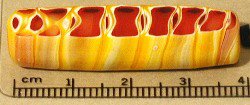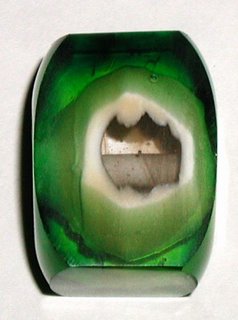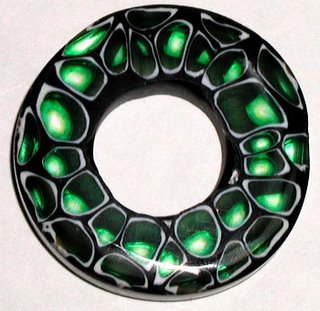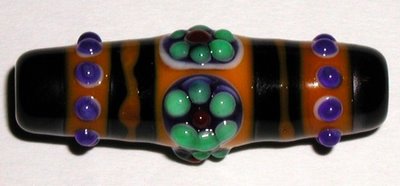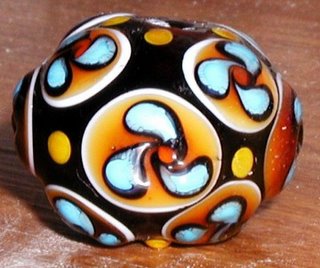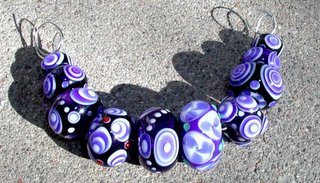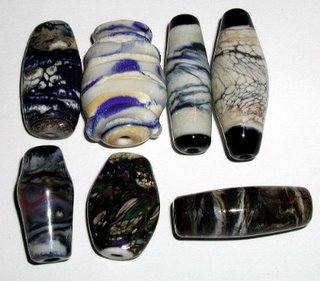Quest for a clear clear
The quest for a clear clear is much more elusive than one may think, a sort of holy grail for beadmakers.
The old Moretti/Effetre is known for being sratched in shipping and handling and then it scums up and bubbles and that simply isnt what we are after. Working it colder and slower it does work OK. Thats not the american way however, we want to blast the glass with tons of heat and make it, no force it to melt now, faster. This is not the best way to do it apparently.
So folks have wandered around looking at clear from other manufacutrers like Vetrofond, which I do like and is a pretty good clear. However, lots of clear is dramatically impacted by the flame environment. Its in the flame where the propane mixes with oxygen that soot can develop, burnt or unburnt fuels, unless this mix is just right your clear will look smoky and streaked with black soot, again, simply not acceptable. I have boxes of beads that would have otherwise been show-stoppers , museum quality beads or so I tell myself if it wasnt for the sooty smoky streaked clear.
Those folks who work on oxygen concentrators are plagued by this even more, so Im told since they dont get a pure 100% O2 from a tank. They are working on an already diminished supply like 80-99% which means they are starting out handicapped. Its starting to sound as though no one could ever get clear, really clear glass onto a bead.....
Latest player on the scene is Kugler. I bought some as it was touted to be the, I mean THE solution to bad clear glass. Its compatible (big issue but not the point of this disucssion) and was/is supposed to be scratch free from better handling. All the posts I read about it at first were great. The solution to the clear issue. So I bought about a pound of it to try out. I was late getting into the run on it. So, when I ordered, I was only able to get 10mm rods. These rods are bigger and have a tendancy to break apart violently when put into the flame even if you do it very gently warming it up slowly.
SO, the glass sat there for a few weeks. I read a few more posts and folks were complaining that it wasnt the magic bullet now. It didnt make the beadmakers less depressed like some zoloft they were apparently looking for. It took marks from tools and left black spots. It also got black streaks and sooty. IT was not what they said it was ! I left mine on the bench for a few more weeks.... Depressed that I did not have the magic solution in hand.
Yesterday, (I know get to the point already) I tried it out. The large rod poped and cracked when put in the flame as I knew it would. The clear did get sooty and streaks of black. The death knell to clear. However when my flame was properly adjusted, and I got it on there properly it was and is very nice and clear. I will post photos. As they say, "it is a poor craftsman who blames his tools". What I found was that its like any glass, as good as those who use it. Yeah it seems to come delivered with less sratches and bubbles in it, it works well in the flame as long as its correctly set. Its no magic bullet but its not bad either.
To end the quest for clear I will have to say, its not the magic bullet that some people may want but its not a bad glass either. It appears to me to be very clear when properly applied. Photos to follow later in anther posting for you to see.

